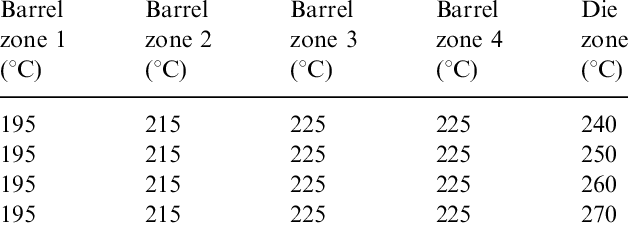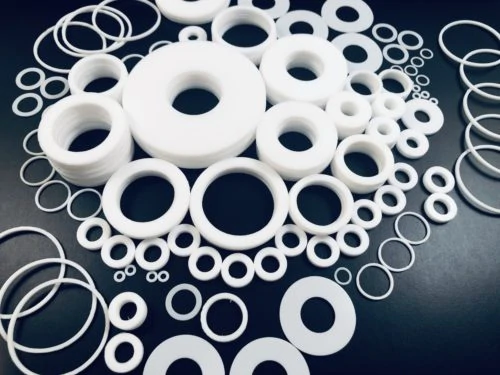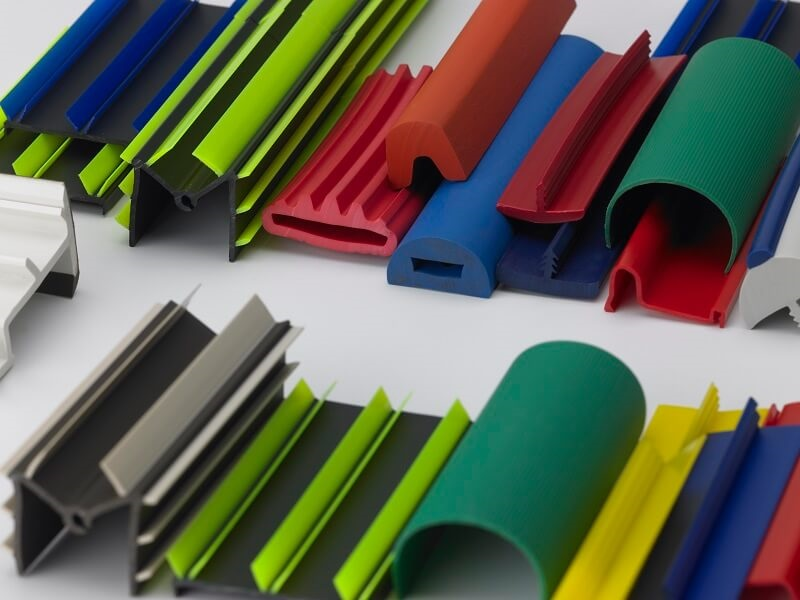Plastic extrusion temperatures vary widely, typically ranging from 160°C to 300°C, depending on the specific type of plastic material used.

Fundamentals of Extrusion Temperature
Extrusion temperature plays a critical role in the plastic manufacturing process. It affects the quality, efficiency, and cost-effectiveness of the final product. Understanding and controlling the temperature during the extrusion process ensures the material melts properly, maintains a consistent quality, and reduces material waste.
Importance of Temperature Control
- Quality of Final Product: Proper temperature control ensures uniform melting of plastic, resulting in a high-quality product with consistent properties.
- Efficiency and Speed: Correct temperature settings can increase the speed of the extrusion process, leading to higher production rates and improved efficiency.
- Cost-Effectiveness: Maintaining the optimal temperature reduces the risk of material degradation, saving costs on raw materials.
- Safety: Overheating can lead to safety hazards, including the risk of fires or toxic emissions. Ensuring the right temperature is crucial for a safe working environment.
Temperature Ranges for Different Plastics
- Polyethylene (PE): Typically extruded between 180°C to 240°C. This range is ideal for ensuring the material’s flexibility and durability.
- Polypropylene (PP): Requires temperatures around 200°C to 250°C. At this range, PP melts evenly, ensuring a smooth extrusion process.
- Polystyrene (PS): Extruded at lower temperatures, usually between 180°C to 240°C. This range helps in maintaining the rigidity and clarity of the product.
- Polyvinyl Chloride (PVC): Requires a higher temperature range, about 160°C to 210°C. Precise temperature control is vital due to PVC’s sensitivity to heat, which can lead to degradation.
Equipment Used in Plastic Extrusion
Plastic extrusion relies on specialized equipment to convert raw plastic materials into finished products. The main components of this process include various types of extruders and temperature control systems, each playing a pivotal role in ensuring the quality and efficiency of the extrusion process.
Types of Extruders
- Single Screw Extruders:
- Function: Melt and pump plastic through a shaped die to form a continuous profile.
- Advantages: Simple design, easy to operate, and cost-effective for producing a wide range of products.
- Power Usage: Typically requires less power compared to twin-screw extruders, averaging around 30 kW to 150 kW depending on size and complexity.
- Material Suitability: Ideal for processing polyethylene and polypropylene.
- Twin Screw Extruders:
- Function: Two intermeshing screws provide better mixing, venting, and flexibility in material types.
- Advantages: Superior for mixing, capable of handling a broader range of materials, including rigid PVC.
- Cost Implication: Generally more expensive than single-screw extruders due to their complex design and higher production capacity.
- Specifications: They come in various sizes and configurations, with power requirements ranging from 50 kW to over 250 kW.
- Ram Extruders:
- Function: Uses a hydraulic ram to force material through the die, ideal for high-viscosity materials.
- Advantages: Excellent for producing dense, uniform products with materials like fluoropolymers.
- Operational Cost: Higher operational costs due to the use of hydraulic systems.
Temperature Control Systems
- Heating Elements:
- Purpose: Precisely heat the barrel and die to the required temperature for melting the plastic.
- Types: Commonly use band heaters, cartridge heaters, or induction heating.
- Energy Efficiency: Modern heating elements are designed for energy efficiency, reducing operational costs.
- Cooling Systems:
- Function: Prevent overheating and maintain a stable temperature throughout the extrusion process.
- Components: Include fans, water cooling systems, and chillers.
- Efficiency: Essential for maintaining product quality and extending the lifespan of the equipment.
- Temperature Sensors:
- Role: Monitor and control the temperature within the extruder.
- Types: Thermocouples and RTDs (Resistance Temperature Detectors) are commonly used.
- Accuracy: Critical for ensuring consistent product quality and optimizing energy use.

Factors Influencing Extrusion Temperature
The extrusion temperature in plastic manufacturing is not a fixed value but varies depending on several factors. These factors include the properties of the material being extruded and the characteristics desired in the end product. Understanding and adjusting these factors is crucial for achieving optimal extrusion results.
Material Properties
- Melting Point: Different plastics have different melting points, which dictate the baseline temperature for extrusion. For instance, high-density polyethylene (HDPE) has a melting point around 130°C to 137°C.
- Thermal Stability: Materials like PVC require careful temperature management to prevent degradation, typically extruded between 160°C to 210°C.
- Viscosity: Lower viscosity materials flow more easily, potentially requiring lower temperatures for extrusion. Viscosity can also change with temperature, affecting the extrusion speed and quality.
- Additives and Fillers: The presence of additives or fillers can alter the melting point and thermal behavior of the plastic. For example, plasticizers used in PVC can lower its melting point.
Desired End Product Characteristics
- Dimensional Stability: Precise temperature control ensures that the product dimensions remain consistent, important for products with tight tolerances.
- Surface Finish: Surface quality can be influenced by temperature. Higher temperatures may lead to smoother surfaces, but they can also increase the risk of defects like sagging or blistering.
- Mechanical Properties: The strength, flexibility, and other mechanical properties of the final product can be optimized by adjusting the extrusion temperature. For instance, lower temperatures might produce a more rigid product.
- Production Speed: Higher extrusion temperatures can increase the speed of production, but they also increase energy consumption and can affect the quality of the final product.
Optimizing Extrusion Temperature
Optimizing extrusion temperature is a delicate balance that can significantly impact the quality, efficiency, and cost of the plastic extrusion process. The goal is to find the perfect balance between the heat applied and the speed of the process to achieve the best possible outcome.
Balancing Heat and Speed
- Maximizing Material Properties: The optimal temperature maximizes the material’s properties, such as strength and flexibility. For example, extruding polypropylene at around 220°C can result in optimal flow and strength.
- Energy Efficiency: Higher temperatures can increase speed but also raise energy consumption. Efficient temperature settings reduce power usage, thus lowering operational costs. For instance, operating just 10°C above the necessary temperature can increase power consumption by up to 5%.
- Preventing Material Degradation: Excessive heat can degrade materials, causing discoloration and weakening of the final product. Maintaining an optimal temperature range is essential for preserving material quality.
- Speed of Production: Adjusting the temperature can help control the extrusion speed. Higher temperatures generally allow for faster extrusion but can lead to quality issues if not properly managed.
Case Studies
- Case Study 1: High-Density Polyethylene (HDPE) Pipes:
- Challenge: Achieving a balance between speed and material strength.
- Solution: Setting the extrusion temperature to around 200°C to 220°C, optimizing both the mechanical properties of HDPE and the speed of production.
- Outcome: Enhanced production efficiency without compromising the pipe’s quality and durability.
- Case Study 2: Polyvinyl Chloride (PVC) Window Profiles:
- Challenge: Preventing thermal degradation while maintaining a smooth finish.
- Solution: Operating at a lower temperature range of 170°C to 190°C, ensuring PVC’s stability.
- Outcome: High-quality window profiles with excellent surface finish and dimensional stability.
- Case Study 3: Polystyrene (PS) Food Containers:
- Challenge: Producing containers with consistent quality at high speed.
- Solution: Extruding at temperatures around 180°C to 230°C, balancing speed with the material’s ability to maintain shape and form.
- Outcome: Efficient production of high-quality, food-safe PS containers.

Troubleshooting Common Temperature Issues
In the plastic extrusion process, maintaining the right temperature is crucial for quality and efficiency. However, various issues can arise, necessitating prompt identification and resolution.
Identifying and Resolving Problems
- Uneven Heating: This issue can lead to inconsistent product quality. Resolving it involves checking the heating elements and ensuring even distribution of heat along the extruder barrel.
- Overheating: Overheating can degrade the material. Address this by verifying the temperature settings and calibrating the sensors for accuracy.
- Fluctuations in Temperature: Fluctuations can result from faulty sensors or control systems. Regular maintenance and calibration of the temperature control system are essential to prevent this issue.
Maintenance Tips
- Regular Calibration: Regularly calibrate temperature sensors and control systems to ensure accuracy.
- Heating Element Inspection: Check heating elements periodically for signs of wear or damage.
- Cleaning and Upkeep: Regularly clean the extruder barrel and screws to prevent buildup that can affect temperature control.
Advanced Topics in Plastic Extrusion
The field of plastic extrusion is continually evolving, with innovations in temperature control and emerging trends shaping the future of the industry.
Innovations in Temperature Control
- Smart Temperature Control Systems: These systems use advanced sensors and algorithms to precisely control the temperature, leading to improved efficiency and product quality.
- Energy-Efficient Heating Elements: New heating technologies are being developed to reduce energy consumption while maintaining optimal temperatures.
Future Trends
- Sustainability: Trends are moving towards more energy-efficient processes to reduce the carbon footprint of plastic extrusion.
- Advanced Materials: The development of new polymer blends and composites that require specialized extrusion processes.
- Integration with Industry 4.0: Incorporating AI and IoT into extrusion processes for smarter, more efficient production lines.




